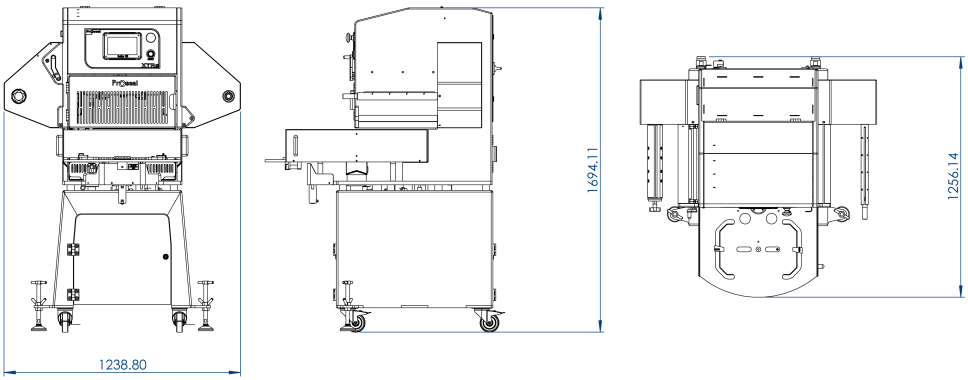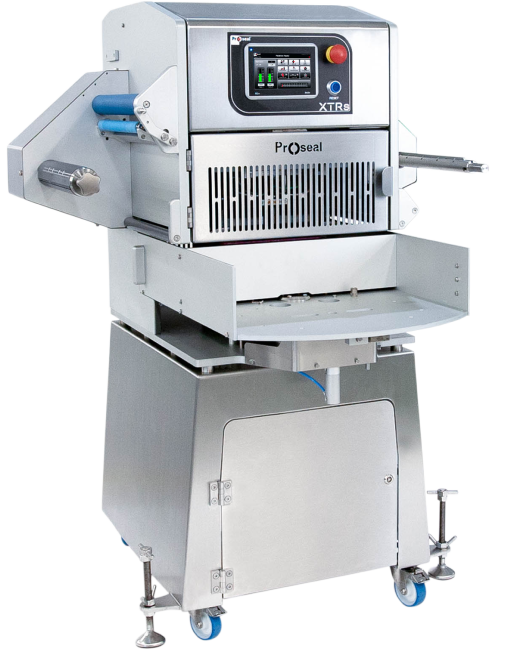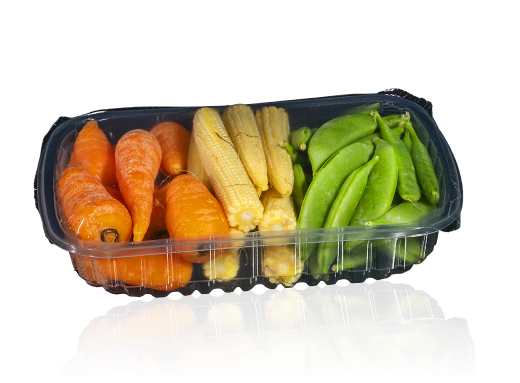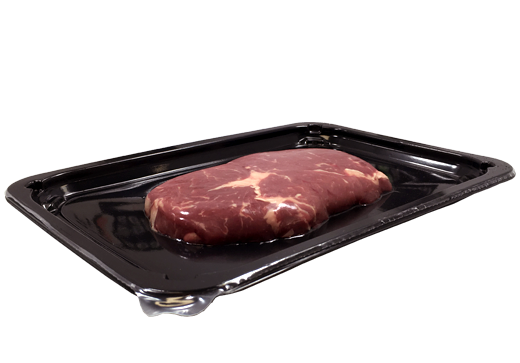Modified Atmosphere Packaging
Modified Atmosphere Packaging is a food packaging method where the Earth's normal breathable atmosphere has been modified by either a single gas or a mixture of gases. It is generally used with a barrier film with low oxygen transmission and is sometimes referred to as Gas Flushing.
The atmosphere in an MA package may contain N2, O2, CO2. Each food product has its own ideal gas mixture to ensure the longest shelf life possible.
The Gases
Carbon dioxide (CO2)
Carbon dioxide inhibits the growth of most aerobic bacteria and moulds. Generally speaking, the higher the level of CO2, the longer the achievable shelf-life. In most cases where CO2 is needed to control bacterial and mould growth, a minimum of 20-30% is required. However, CO2 can be absorbed by fats and water and in some cases cause pack collapse.
Nitrogen (N2)
Nitrogen is an inert gas and is used to exclude air; it is also used as a balance gas (filler gas) to make up the difference in a gas mixture. It helps prevent pack collapse where the CO2 has been absorbed. For modified atmosphere packaging of dried snack products, 100% nitrogen is used to prevent oxidative randicity.
Oxygen (O2)
In many foods oxygen should be excluded but there are often good reasons for it to be present in the map gas mixture.
- To maintain fresh, natural colour in red meat
- To maintain respiration (in fruit and vegetables)
- To inhibit growth of anaerobic organisms (in some types of fruit and vegetables)
Ideal residual oxygen levels are dependent upon each customer's shelf life trials and tolerances.
Food manufacturers should seek the advice of Food grade gas suppliers before deciding which gas supply mode is the most appropriate for their needs.
Guidelines have been quoted in the CCFRA (Campden and Chorleywood Food Research Association) map guide document.
Our MAP experts and Test Kitchen are standing by to help you with your enquiries.
Please get in touch or call us to find out more.
| Product |
Nitrogen
N2 |
Oxygen
O2 |
Carbon Dioxide
CO2 |
Achievable Shelf Life
Days |
| Beef |
|
70–80 |
20–30 |
5 to 8 |
| Lamb |
|
70–80 |
20–30 |
5 to 8 |
| Pork |
|
70–80 |
20–30 |
5 to 8 |
| Chicken various |
|
70–80 |
20–30 |
10 to 14 |
| Chicken various |
50 |
20 |
30 |
10 to 14 |
| Chicken various |
70 |
|
30 |
10 to 14 |
| Turkey |
|
70–80 |
20–30 |
7 to 14 |
| Turkey |
70 |
|
30 |
10 to 14 |
| Duck |
|
70–80 |
20–30 |
10 to 14 |
| Sausage |
|
70–80 |
20–30 |
10 to 14 |
| Bacon |
70 |
|
30 |
14 to 21 |
| Cooked Meat |
70 |
|
30 |
14 to 21 |
| Cooked Chicken |
70 |
|
30 |
14 to 21 |
| Charcuterie |
70 |
|
30 |
14 to 21 |
| Raw White Fish |
30 |
30 |
40 |
4 to 6 |
| Raw Oily Fish |
70 |
|
30 |
4 to 6 |
| Crustaceans |
30 |
30 |
40 |
4 to 6 |
| Cooked Fish |
70 |
|
30 |
7 to 21 |
| Ready Meals |
50–70 |
|
30–50 |
7 to 14 |
| Sandwiches |
70 |
|
30 |
3 to 5 |
| Pies/Sausage Rolls |
70 |
|
30-50 |
7 to 14 |
| Quiche |
70 |
|
30–50 |
7 to 14 |
| Salads/Vegetables |
90 |
5 |
5 |
5+ |
| Hard Cheese |
50–70 |
|
30–50 |
2 to 12 |
| Pasta |
50 |
|
50 |
3 to 4 |
| Bakery |
0–30 |
|
70–100 |
2 to 12 |




















